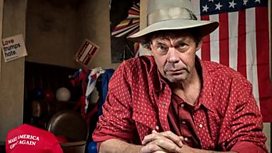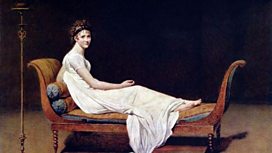armradio.am
Armenia beat Kazakhstan 2-0 in 2018 World Cup qualifier
26 Mar 2017
Armenia beat Kazakhstan 2-0 in a 2018 World Cup qualifier held at Hanrapetakan Stadium in Yerevan.
Henrikh Mkhitaryan scored the opener on the 73rd minute, Aras Ozbiliz made it 2-0 two minutes later.
Kazakhstan was left with 10 men after Sergey Maliy was sent off for a foul against Mkhitaryan on the 65th minute.
The new film “The Promise”, directed by Northern Irish filmmaker Terry George, who also wrote In The Name of the Father, Some Mother’s Son and The Boxer, is a very powerful epic drama about the Armenian Genocide which took place in 1915. Starring Angela Sarafyan, Oscar Isaac and Christian Bale, “The Promise” takes your standard love triangle romance drama and sets it against the background of the Armenian genocide in the crumbling Ottoman Empire, with both fighting for the affections of Charlotte Le Bon and their own lives. You can see a
The film is to be released in Irish cinemas on April 28th. In USA on the 21st and U.K On 21st.
RFE/RL Report
Sarkisian Plans `Security Role' After Presidency
March 26, 2017
President Serzh Sarkisian made clear on Saturday that he does not plan
to leave the political arena after serving out his second and final
term in office next year.
"I am constantly asked what I am going to do after 2018," Sarkisian
said, visiting a military base in Nagorno-Karabakh. "I have never
planned [beforehand] where I will be in the next stage of my life. I
always found myself in places where I was of greater help to our
security."
"I don't know now what the political situation will be like in 2018,
but if the political force headed by me wins the upcoming elections,
then based on the configuration at that moment I will play a role, in
some capacity, in ensuring the security of our people. I don't know
what that capacity will be, but I will definitely be of help in some
format," he told soldiers and their parents attending a ceremony
there.
Sarkisian led Karabakh's Armenian-backed forces at the start of their
war with Azerbaijan and was appointed as Armenia's defense minister in
1993. He held this and other top security posts in Yerevan before
becoming Armenia's prime minister in 2007.
Armenia will switch to the parliamentary system of government
immediately after the end of his decade-long presidency in April
2018. Sarkisian's political opponents claim that he is intent on
holding on to power.
The 62-year-old president has so far not publicly ruled out the
possibility of becoming prime minister next year. The current Armenian
premier, Karen Karapetian, has made no secret of his desire to retain
his post after April 2018.
Some observers have speculated that Sarkisian might only stay on as
chairman of the ruling Republican Party of Armenia (HHK) and continue
pulling the strings in that capacity. An HHK representative said in
November that he will lead the party for "many years" to come.
In his speech, a uniform-clad Sarkisian also mentioned the April 2
parliamentary elections, urging Armenians vote for a political group
that has a proven track record on defense and national security. He
described security as "the number one issue" facing Armenia and
Karabakh. The HHK's election campaign motto is "Security and
Progress."
"We need to have a strong security hand," said Sarkisian. "Populism or
weakness at the top of the security pyramid would ruin a whole
nation."
"Our security requires strong leadership," he added.
Transportation Monitor Worldwide
Armenia's second air company to start operating flights from Gyumris
Shirak Airport
March 25, 2017Armenias second air company will operate flights from Gyumris Shirak
Airport, the press office of the General Department of Civil Aviation
of Armenia reported on Thursday.
Under an agreement with the General Department of Civil Aviation,
Taron-Avia will start operating regular and not regular flights in
April 2017.
Before that, flights from Shirak Airport had been operated by two air
companies - Armenia Air Company and Russias Pobeda.
The launch of Taron-Avia Air Companys flights will create new jobs and
contribute to economic development in the region spurring tourism.
The Armenian government has taken certain steps to develop Shirak
Airport. In particular, starting from December 31, 2014, departing
passengers no longer had to pay AMD 10,000 as duty.
On January 1, 2017, air navigation service became 50% cheaper, and
weather forecast service became free.
Armenia - International Airports CJSC is planning to invest $3 million
in development of the airports building and infrastructures in 2017.
There are two airports in Armenia Zvartnots in Yerevan and Shirak in
Gyumri. They are run by the International Airports CJSC in accordance
with the concession management contract signed with the Armenian
government in 2001 for 30 years.
The International Airports CJSC belongs to American International
Airports, an Argentinas company owned by Eduardo Eurnekian, an
Argentine entrepreneur of Armenian descent. ($1 AMD 484.04). 2017
Global Data Point.
arka.am
Ostrich farm in Armenia seeks $1.5 million investment
March 27.
Roberto Straus, a company that has established an ostrich farm in Armenia, seeks to attract $1.5 million investment to boost output. The company has placed a relevant investment project on the electronic platform of the Ministry of Economic Development and Investment at
www.investmentprojects.am .
The company has been working in the Armenian market for almost 10 years, engaged in breeding of ostriches and selling ostrich eggs and meat, which are in demand in the world market because of their useful qualities, including low cholesterol and calories.
The company has acquired more than 10 acres of land with the necessary infrastructure, which allows it not only to breed ostriches, but also to develop its own production of bird feed. To expand its commercial operations the company plans to expand production through attracting investment,
The company intends not only to produce meat and eggs, but also to use all the by-products - leathers, feathers, claws, ostrich fat and even shells (for decorative art painting).-- 0 –
massispost.com
Patriarchal Election Déjà Vu in Turkey: Government Meddling in the Election is Inevitable, But Not Decisive
Dr. Hratch Tchilingirian
Oxford
March 27, 2017
The election process of a new Armenian Patriarch in Turkey faces the customary state-imposed restrictions, administrative hurdles and arbitrary treatment of the Armenian community. In recent weeks, the situation has been exacerbated by personality clashes and ambitions of the high ranking clergymen at the Patriarchate, who have turned a problem into a divisive major crisis.
The 556-year old Patriarchate is one of the four Hierarchical Sees of the Armenian Apostolic Church.
The problem facing the Armenian community started in July 2008 when the 52-year-old serving Patriarch Mesrob Mutafyan was officially diagnosed with an incurable illness. By then he had been in a vegetative state for some time at the Surp Pirgic Hospital and remains so ever since.
In 2010 Archbishop Aram Ateshian was appointed Patriarchal Vicar with the consent of the Turkish government. This temporary arrangement until the election of a new patriarch turned into an indefinite status quo. The continued uncertainty without a clear sight of elections caused controversies and division within the community.
Under pressure and protests, in order to clear the path of organizing new elections, in October 2016 Patriarch Mesrob was officially declared “retired” by the Patriarchate’s Religious Council.
Archbishop Aram, who was supposed to head the election process, by seeking the government’s permission as a first step, continued to drag on the uncertain situation, which had left the community without a functioning patriarch for almost nine years.
In February of this year, the tensions and internal disagreements, both among the clergy and the laity, reached to a boiling point. Bishop Shahak Mashalian, the chairman of the Patriarchate’s Religious Council, resigned by publishing a fiery letter. He blamed Archbishop Ateshian and certain lay leaders of the Armenian community for the deepening stagnation of the Patriarchate and the community in general.
The highly explosive situation created by Mashalian’s resignation was defused through the mediation of the Catholicos of All Armenians who invited the three bishops of the Patriarchate to Etchmiadzin for consultations and to jointly seek solution to the crisis.
Within days after their return from Etchiadzin, on 15 March, Archbishop Karekin Bekdjian — the most senior bishop of the Patriarchate and the serving Primate of the Armenian Church in Germany — was elected Locum Tenens (deghabah) by 2/3 votes of the Religious Council. According to the agreement reached in Etchmidazin and in accordance to the rules and traditions of the Armenian Church, Archbishop Ateshian was to step down as Patriarchal Vicar immediately after Bekdjian’s election.
However, within minutes of the election of the Locum Tenens, Ateshian produced a letter from the Istanbul Governor’s Office which declared that the election was “not legally possible” and Ateshian remains to be recognized as the official Patriarchal Vicar by the government.
Many in the community, including two Armenian MPs in the Turkish parliament, consider the Istanbul Governor’s Office letter crude meddling and lacking any legal and procedural basis. Archbishop Ateshian and his small circle of supports insist that without the government’s consent no election is valid. This has created a stalemate and tensions are high on all sides.
The Turkish government’s meddling in the process of election of the 85th Patriarch of Istanbul and All Turkey is inevitable, as in the past, but not decisive. The community has the ultimate say as it did nearly 20 years ago.
The last four patriarchal elections in 1950, 1961, 1990 and 1998 were carried out by official directives issued by successive Turkish governments. Since 1923, the government has used state discretion rather than church bylaws as the basis of patriarchal election. All four elections were fraught with government interference, procedural burdens imposed on the community and torturous recognition.
In 1998, the Turkish state refused to approve an election date for some five months, depriving the Armenian community the freedom and inherit right to vote for a new church leader.
Government interference in the election is not only about setting procedures.
During the last election almost 20 years ago, the Armenian community was informed through informal channels that between the two eligible candidates the Turkish state preferred the 72-year-old Archbishop Shahan Sivajian over the charismatic and US-educated Archbishop Mesrob Mutafyan, who was 42 years old at the time.
After the death of Patriarch Karekin Kazanjian (1990-1998), 45 representatives from 38 districts in Turkey had met at the Armenian Patriarchate in March 1998 and elected a 21-member Electoral Committee responsible for organizing the elections. One of the main tasks of such a committee is to negotiate with the Istanbul Governor’s Office for the state required permission to hold church elections.
On 28 April 1998, the Istanbul Governor’s Office ordered a halt to the plans without explanations until further notice. Nevertheless, the community went ahead with the election of a Locum Tenens (deghabah).
An old script is being staged with new actors today.
Similar to the scenario played out on 15 March, in August 1998 Archbiship Mesrob Mutafyan was duly elected Locum Tenens, but the government refused to recognize him, arguing that under Turkish law the eldest and most senior cleric — Archbishop Sivajian at the time — must fill the interim post until a successor is elected.
Media outlets were used to put pressure on the community. The rightwing Turkish media launched a slander campaign against Mutafyan, accusing him of anti-Turkish activities. In one case, Mutafyan filed and won a lawsuit for libel against “Turkiye” newspaper.
The Patriarchate protested the state’s orders to no avail. On the contrary, the government responded with two more memos declaring Sivajian the only recognized interim leader and warning that any resistance to this decision would be prosecuted under the law.
After months of state interference and delays, the Governor of Istanbul — having received the mandatory approval of the Council of Ministers — permitted the 60,000-strong Armenian community in Turkey to proceed with the election on 14 October 1997.
The General Assembly of the Armenian Church Community — made of 10 clergymen and 79 lay delegates representing 15,811 church members — elected Archbishop Mesrob Mutafyan as the 84th Patriarch of Istanbul and All of Turkey. The other candidate, Archbishop Sivajian, whose candidacy was supported by Turkish authorities, received 15 votes.
It is not a secret that the government maintains strict restrictions on the Armenian Church’s activities, as it does on all Christian churches in Turkey. After the coup in 1960, the government dismantled the Armenian Community Central Council, the highest lay body in Turkey, which worked for the interests of the community alongside the Patriarchate. In December 1997, the government ordered the Patriarchate to disband its council of lay advisors and forbade lay delegates from participating in the election for a new Catholicos in Etchmiadzin in 1995. The list of restrictions is long and far reaching. In 1971 the state ordered the closure of the Holy Cross Armenian Seminary, which deprived the Patriarchate of training future priests and church workers.
For 94 years since the founding of the Turkish Republic, the state has persistently curtailed, tightly controlled and closely monitored all the significant rights of the Armenian community that are essential to the viability of their collective life. More than any other area, elections and administration of churches and charities have been most torturous and energy-sapping for the declining Armenian community in Turkey.
The election of the 85th Patriarch of Armenians in Turkey will, no doubt, be held true to precedents established by the state. But, in the end, as in previous elections, the Armenian community shall have the final word as to who will lead the historic See of the Patriarchate of Constantinople — or per Turkish state’s sanctioned title, the “Patriarchate of Istanbul and All Turkey.”
Special for the Armenian Weekly
Documentary about Islamized Survivors of the Armenian Genocide Premieres in Istanbul
By Uzay Bulut
March 23, 2017
A new Turkish documentary about Islamized survivors of the Armenian Genocide premiered in Istanbul on Feb. 9.
The documentary The Children of Vank tells the story of what happened to the few survivors of the 1915 genocide in the province of Dersim (“Tunceli” in Turkish) and of the 1937-38 Dersim massacre.
According to the documentary, the Armenian survivors of these two genocides were exiled by the Turkish government to other places across Turkey.
Due to the forced Turkification and Islamization policies of the Turkish government, the Armenian names of the survivors were changed and they were given Turkish names. They were then made to convert to Islam by reciting the Shahada, the public recitation of Islamic belief that is declared by all converts to Islam. Some were raised as Alevis in Alevi households.
The film is named after the Surp Garabed Vank (Saint Garabed Monastery) in the village of Halvori in Dersim. The word “ Vank ” means monastery in Armenian.
The Surp Garabed Vank , which is believed to have been built in the ninth century, was the only Armenian place of worship in Dersim that was not destroyed in the Armenian Genocide.
The monastery was bombed by Turkish forces in 1937 and its priest was arrested. It was completely demolished in the massacre in 1938 and the priest was brutally murdered—alongside other Armenians and Qizilbash/Alevis in the village of Halvori Vank.
“The Turkish state targeted all Qizilbash/Alevis across Dersim as well as the Christian community in that village in the 1937-38 genocide,” said Kazim Gundogan, the producer of the movie, speaking to the Armenian Weekly. “Almost all of them were killed. That is why, we named the people whose stories we told 75 years after the genocide ‘the children of the monastery ( Vank )’.”
Kazim Gundogan and Nezahat Gundogan, the researchers of the movie, traced the Armenian survivors of these two genocides in the provinces of Konya, Bolu, Istanbul, Izmir, and Dersim and conducted interviews with them. Kazim Gundogan also wrote a book about the Armenians of Dersim entitled The Children of the Priest: Armenians of Dersim 1 . “Our research on Armenians of Dersim is ongoing. We will publish a second book about the stories of the Alevi, Muslim, atheist and Christian Armenians of Dersim at the end of this year,” said Gundogan.
The documentary details the courageous yet traumatic lives of the surviving children and grandchildren of the monastery. It describes their shattered memories, their efforts of searching for their roots and their journey back to Dersim.
Gundogan emphasized that he would like to share the documentary with those who want to learn more about the Armenians of Dersim and the 1938 massacre by organizing premiers and talks about the movie across the world.
Ahmet Ak, who learns about his grandmother’s Armenian identity, says in the documentary: “I think she was so scared that she did not share anything with us. It is so hard to be an Armenian in these lands. And they lived through these difficulties in person so deeply.”
Kazim and Nezahat Gundogan have also produced two ground-breaking documentaries about the 1938 Dersim massacre: Two Locks of Hair: The Missing Girls of Dersim (2010) and Unburied in the Past (2013).
In 2012, the two also published a historic book called The Missing Girls of Dersim , which contains more than a hundred stories as well as several documents detailing the painful experiences of the surviving children of Dersim, who were kidnapped by Turkish soldiers or bureaucrats following the massacre.
At the press conference organized during the premier of the Children of Vank , the director, Nezahat, said that it took them four years to complete the making of the documentary.
“We all know that historical truths are covered up, hidden and denied by the official ideology and the official history narrative in our country. Hence, it takes a very long time to chase the truths and reveal them,” said Nezahat. “It is hard to be a Kurd, an Alevi, a woman, a homosexual, a child—to be the ‘other’— in these lands… But being an Armenian is even more difficult. Armenians are seen as ‘the other of the other,’” Nezahat added.
According to Nezahat, the documentary is not just movie, it is what the filmmaker calls “a struggle for truth.” “I hope this movie will pave the way for revealing many other untold stories,” Nezahat explained. “And I hope it will help stop even greater sufferings and atrocities from taking place again.”







